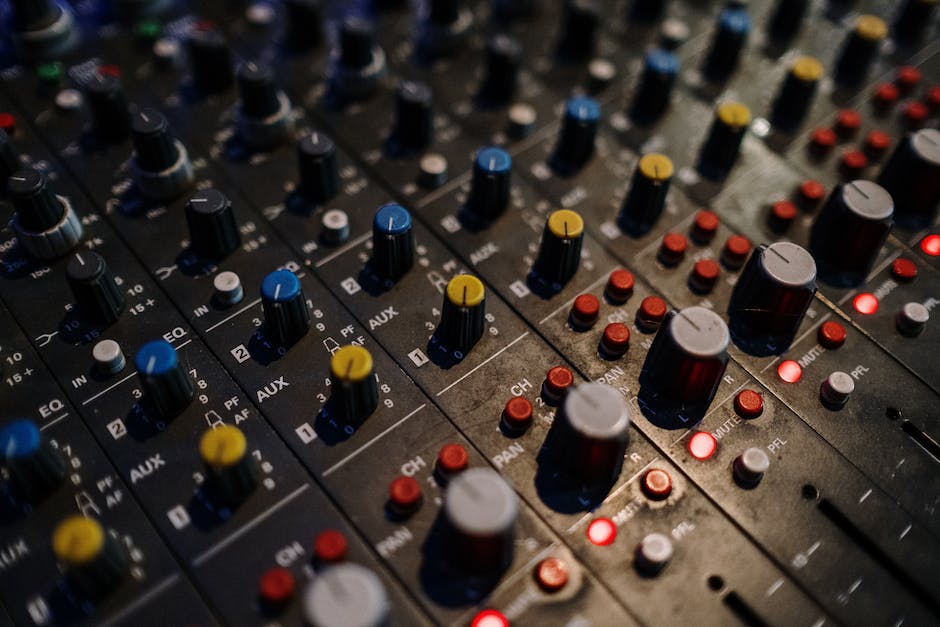The world of audio equipment, especially in the music sector, is a fascinating one, filled with all sorts of complex yet interesting components with diverse functions. Among these, preamps stand out as essential parts of the whole construct, significantly contributing to the creation of sound. These complex devices are often misunderstood and overlooked, despite their crucial role in the music and audio production process. In an effort to foster a more solid understanding of preamps, we delve into their fundamental concept, their crucial role in the signal chain, key aspects to consider during selection, and how they contribute in shaping the sound in different music genres.
Basic Understanding of Preamps and Sound
Music is a universal language that requires no words. It’s a wondrous world of rhythm and harmony, capable of captivating the soul and stirring the senses. Among the intricate elements involved in creating these beautiful sonic landscapes, is a little gem known as the preamp.
A crucial component in sound processing, the humble preamp can make or break your sound, but what’s the magic behind it? Dive headfirst into the world of sound processing and unearth the enchanting universe that lies beneath the surface of your favorite songs.
Picture this: A passionate musician pours their heart into a powerful performance, their soul-soaked notes soaring through the air, yet without preamps, the masterpiece remains entombed within the musician’s instrument. Preamps act as the liberator of music, unlocking the gates and setting the sonic symphony free. They are, in essence, the key that ignites the engine of sonic creation, which takes us on a transcendent journey across the emotional landscape of music.
The role a preamp plays in sound processing is somewhat akin to a magnifying glass. The low level signals from microphones or instruments are often whispering echoes, barely audible to the mortal human ear. It’s the preamp’s job to amplify these signals while minimizing any noise interference, producing louder, clearer sounds. Without them, these subtle yet significant details might get lost in translation, turning a symphony into mere sounds.
As aficionados of sound already know, the world of music is colored with a rich spectrum of nuanced tones and timbres. An electronic synthesizer crackles with energy, while a solo violin often sings a melancholy tale with its vibrato. These are not just mere sounds, they are emotional narratives. The magic in a preamp’s function lies within its ability to capture and reproduce these sonic nuances, allowing the musician’s story to be told in its most authentic form.
Moreover, there is no one-size-fits-all when it comes to preamps. As flavors vary in a culinary masterpiece, so do preamps in their sound characteristics. Each presents a unique color palette, capable of adding spectral hues and tonalities to the sound, creating a sonic picture as diverse and vibrant as a symphony of fall leaves dancing in the wind.
Every preamp, like every instrument, has a personality. From the warm, soft-toned tubes to vibrant, harmonically rich solid-states, they all color the musical canvas differently. This valuable tool allows sound engineers to manipulate and blend tones expertly, resulting in a unique, memorable, and magical musical experience.
Therefore, it is important to remember that a preamp is not just another audio gear. It is a vital tool in the creative process, a magic wand that conjures the spellbinding symphony from silence. Understanding the dynamic role of preamps in sound processing allows one to appreciate the countless layers of complexity in music. So next time when you press ‘play’, lend an ear to the intricate dance of well-amplified sounds and remember to appreciate the magical wizardry behind it – the preamp.

Preamps in the Signal Chain
Resting almost invisibly amidst the complex puzzle of the audio signal chain, preamps might just be the unsung heroes of the sonic world. They are the champions of silent whispers, enough to let every note, every riff, every beat be heard in all its intended glory. But like puppet masters operating unseen in the backdrop, where do preamps sit in the signal chain and why does their positioning matter so much?
In the grand symphony of sound, consider preamps as the conductors of an orchestra. Right from the moment an instrument creates sound, they readiness to catch and amplify the raw, unamplified signals. Occupying the first stage in the signal chain, preamps are vitally positioned to interact directly with the initial signal emitted from your microphone or instrument, maximizing the signal strength while minimizing noise. This unique position in the chain allows the preamps to work like the vanguard of an army, protecting the original sonic composition from getting lost in the din of background noise.
The reason preamps hold the prime position in the signal chain is deeply rooted in the nature of audio signals themselves. These signals at their origin are delicate, subtle entities. Left alone, they would barely make any impact. As they journey through the signal chain, they face myriad obstacles. Distortion, unwanted noise, and signal loss are common threats in their path – all capable of drowning out the soft strains of our musical expressions. But when preamps enter the scene, they bolster these signals with enough strength to begin their journey along the chain, giving them the boost they need to make it through to our ears.
The variety in preamp characters defines its essence of sound blending. So diverse are their sound profiles that a preamp could change the tonal color at the start of the signal chain. With the positioning at the first stop of the chain, preamps have the significant advantage of defining the first – and therefore the most impactful – impression of the sound. And it’s this crucial moment of the chain that the multi-faceted nature of preamps really shine.
A legion of sound engineers across the globe cherish the intrinsic significance of preamps in the signal chain. With sensitive controls and diverse sonic possibilities, the preamp offers the creative power to tweak, nudge and whirl the tonal shades – raw and untainted at the source – into an amplified artistic expression, ready to delight listeners.
Harnessing the power of a preamp at the start of the signal chain is like embarking on a grand, thrilling sonic journey, with the quietly confident conductor guiding our way from the first note. Preamps’ position in the chain holds the magic wand that breathes life into raw signals, transforming them into amplified narratives that stitch together the mesmerizing tapestry of sound – beautiful, overwhelming, and endlessly fascinating.

Considerations When Choosing a Preamp
Unearthing the Heart of the Beat: Zeroing In on the Ideal Preamp
In the grand concert that is music production, preamps take the podium as the unassuming conductors, subtly but expertly guiding the symphony of sound to a complete and fulfilling crescendo. Selecting the perfect preamp isn’t just about enhancing sonic quality; rather, it marks the fine line between the ho-hum and the truly transformative, sketching the nuanced narrative of our aural epic.
Artistry of Audio Circuits: The Path to Transcendental Sonic Experiences
Preamps are more than mere circuits in an audio chain. They’re your gateway to an immersive sonic universe, your segue to a reality where notes bloom, where chords cascade, and where every beat throbs with palpable vitality. Thus, when diving into the hunt for the ideal preamp that would become your trusted copilot in this sonic exploration, the first thing to consider is its audio circuit design. Solid-state or vacuum tube, each holds a unique allure. While solid-state basks in the brilliance of accuracy and crispness, vacuum tubes revel in a warm, lively flair, rendering a vintage, organic hue to sounds.
Bended Signals, Unbended Intentions: Output and Input Impedance
Hidden in the less glamorous specs sheet are the output and input impedance that play a critical role in determining the compatibility and performance of your preamp. The key is to match the preamplifier’s output impedance with your power amplifier’s input impedance. Get this balancing act right, and you’re all set for a harmonic and distortion-free audio experience.
Little Dials with Big Impact: Gain and Headroom
Decoding the myriad possibilities of tonal manipulations, gain and headroom are the silent players stringing together the overtones of drama in the soundscape. They allow for the pristine capturing of those in-between silences, those crescendo rises, and decrescendo ebbs, morphing the ordinary into the extraordinary. A generous headroom ensures that transient peaks are accurately amplified, maintaining integrity, while a wide gain range provides the necessary flexibility to handle a variety of input sources.
The Invisible Aura: Noise Factor
Consider also the noise factor of your potential preamp, that invisible presence capable of morphing resounding melodies into irksome cacophonies. Various aspects such as power supply design, component quality, shielding, and grounding contribute to the preamp’s noise figure. Seek out a preamp with a low noise floor, as one must remember, a perfect melody isn’t about the loudest notes, but about the clarity and purity of every note that contributes to the composition.
In the grand scheme of music production, preamps may just be a cog in the machine, yet, perfecting their selection could greatly elevate your symphony of sound. They brim with their own quirks and tonal personalities, each potential partner in your sonic journey awaiting to be discovered. Due diligence in selection, therefore, carries the potential to play the perfect accomplice to the brilliance of the musical tapestry, elevating every note, capturing every beat, and binding together the universal language of music.

Applications of Preamps in Various Music Genres
Unfurling layers deeper into the world of music production, we plunge into the ocean of audio circuit artistry where two titans exist: solid-state and vacuum tube preamps. Each holds its unique charm and stirs the air differently, subtly influencing the overall symphony of sound.
On one hand, solid-state preamps have a reputation for being gritty, reliable, and capable of capturing a more truthful sound, which lends them perfectly well to capturing the raw essence of jazz or the abrasively joyful noise of punk rock. On the other hand, vacuum tube preamps contribute a warmth and depth that many vintage-loving, tone-chasing audio aficionados find irresistible. These preamps color the music with lush harmonics, reviving the golden era of rock ‘n’ roll and blues.
Behind the seamless flow of melodies and tunes, behind the foot-stomping beats and soul-stirring solos, lies the galvanizing role of output and input impedance. A harmonious match of impedance ensures premium performance and compatibility of the preamp with other elements in the chain. It’s crucial to consider these connections like the veins of a vast, melodious body, resonating the intricate symphony of genres from the pulsating jungle beats of tribal house to the ghostly whispers of ambient synthesis.
As the music scenes cross-pollinate, the boundaries blur; the need to manipulate tonal dimensions becomes paramount. This is where the aspect of gain and headroom arises, like the tide that raises all ships. How loudly a genre roars or how gently it whispers can be subtly finessed by these variables. A high-gain beast might be perfect for the earth-shattering growl of heavy metal, while dance pop could use a microscope on headroom to maintain its tight, pulsating beats.
Sound engineers have the power of Zeus at their fingertips, and they are well-aware that every god has his nemesis. In the arena of audio production, noise is the eternal foe. The selection of preamp often becomes a battle strategy against this unwelcome guest. The lower the noise factor, the higher the odds of producing a crisp, squeaky-clean sound that pop and electronic genres often pine for.
Preamps, then, are the unsung heroes, the silent cheerleaders powering the music we love, flicking switches on the emotional rollercoasters sound can set in motion. From the mellow twang of a country guitar to the guttural roar of death metal vocals, preamps offer more than amplification, they mold the spirit of genres, existing as the unseen conductors guiding our auditory journeys.
Like artists with a broad palette of colors, the dedicated sound engineers, artists, and music lovers appreciate the potentials of preamps. In their hands, the preamp is the magic wand that awakens the dormant beauty of an acoustic sound or the electric storm within an amplified note, a tool that brings forth the symphony of frequencies and carries music’s sheer ability to move, to thrill, and to unite. Arriving at this juncture, it is undeniable that the right preamp, deployed correctly, vastly influences the unique sounds across the cosmos of music genres. Sharpening this understanding can elevate the power and depth of any auditory experience, always examining past the facade into the magic beneath sonic creation’s surface.
Remember, knowledge is power. Whether you’re a sound engineer flexing your prowess over a mixing console, a musician fueling your creative process, or simply a music enthusiast tinkering with your hi-fi stack, a good preamp could be the game-changer you’ve been seeking in your quest for the perfect sound.

Having shed light on the critical role and influence of preamps in music and audio production, it is clear that these miniature devices immensely contribute to the magic that we call music. From the moment an instrument or microphone emits a sound to when it finally hits our ears, preamps work tirelessly to ensure that the best possible sound quality is preserved. They not only define the tonal character but greatly determine the overall output’s sound quality. Depending on the genre, the type and settings of the preamp can dramatically change the music’s color and tone. Therefore, understanding their significance is undeniably crucial for anyone seeking to make great music.

Comments.
Currently there are no comments related to this article. You have a special honor to be the first commenter. Thanks!